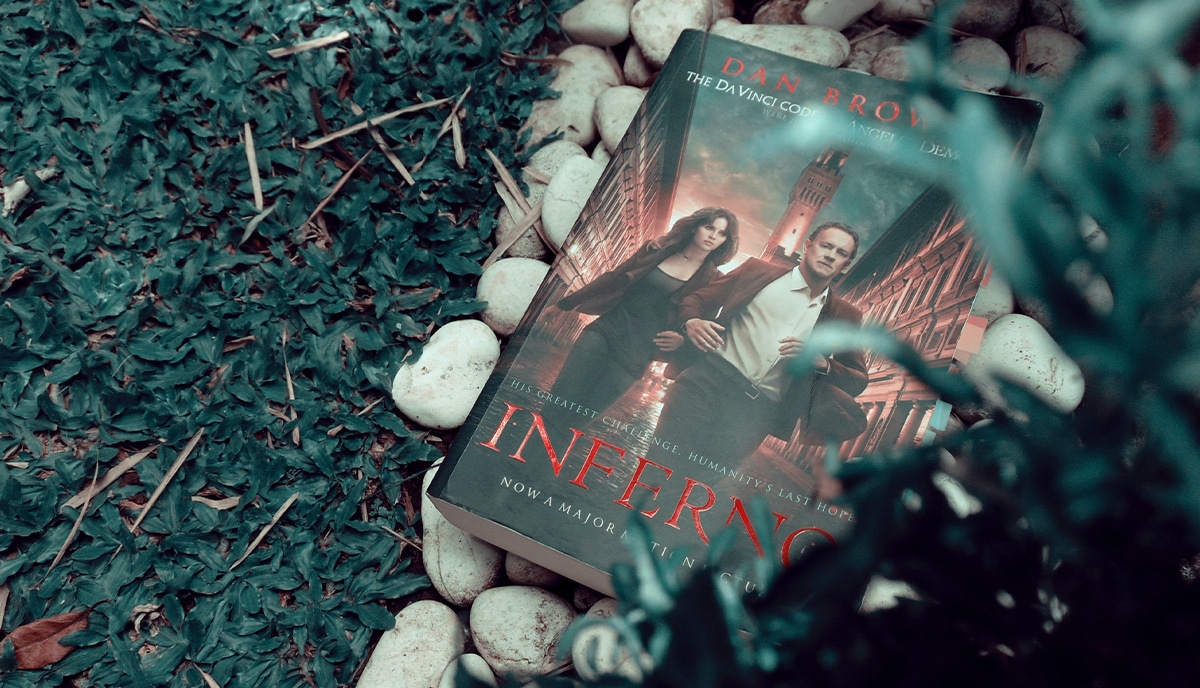More self-publishers are turning to hardcover books to expand their business, boost sales, and increase profit margins. But how much is it to print hardcover books and is it a viable option for you? We answer those questions here

In the world of publishing, hardcover books are considered a symbol of prestige and quality. We know these books for their durability, elegant appearance, and ability to signify both quality and authority for readers. If you're a self-publishing author, a small press, or a mainstream publisher looking to print a hardcover book, you may wonder about the cost involved. In this post, we will explore the factors that influence the cost of printing a hardcover book and provide you with several helpful insights into the pricing options available in the market and how to choose the best solution for your printing and publishing needs.
Understanding hardcover books
Before we delve into the cost aspect, let's take a moment to understand what exactly a hardcover book is. Hardcover books, also known as hardback books and case bound books, are designed to withstand the test of time. We craft them with a sturdy binding process that involves arranging and gluing the pages together into a text block, which is then adhered to covers made of cardboard and topped with protective fabric or paper. We may also sew the page signatures and the cover besides gluing for extra strength and to allow the book to be opened flat without breaking the spine. The covers of hardcover books are often visually appealing, featuring vibrant artwork designs and illustrations that attract the eye and may also be enhanced with special features such as embossing, debossing, metallic foil stamping, lamination, varnishing, and UV spot coating. The sturdiness, durability, and high-quality materials of a hardcover book make it a product that looks great, signifies value, and is made to last.
Factors influencing hardcover book printing costs
Several factors come into play when determining the cost of printing a hardcover book. These factors include the book's size, page count, cover materials, printing options, and additional features. Let's explore each of these factors:
1. Book size
The size of your hardcover book plays a significant role in its overall cost. Common trim sizes for hardcover books include 6 x 9 inches, 8.5 x 11 inches, and 7 x 10 inches, among others. Larger trim sizes may require more materials, resulting in increased printing costs. It's essential to consider your target audience and the genre of your book when selecting the size, as it can affect the reading experience and production expenses.
2. Page count paper type
The number of pages in your hardcover book directly affects the production cost. Printing more pages requires additional materials and labor, resulting in higher expenses. It's important to balance providing sufficient content for your readers and managing the printing costs. Careful planning and editing can help optimize the page count and reduce unnecessary expenses. The paper you choose for the interior pages—its weight and surface qualities—also affects the cost of printing. So, for a coffee-table book with full-color art reproductions, you'd need a fairly heavy gloss coated art paper to do the images justice; whereas for an unillustrated novel, uncoated, lighter-weight paper should be fine. An art book or coffee-table book, for this reason, will cost more to produce than a novel.

3. Cover materials
The materials used for the cover of your hardcover book can significantly affect the cost. Hardcover books often feature a thick cardboard or paperboard casing—typically grayboard at 2 mm to 3.5 mm thickness—covered with printed paper, cloth, or leatherette. The choice of cover material, such as linen, leatherette, or custom designs on a high-quality paper surface, can add a touch of elegance but may come at a higher price point. It's crucial to consider your budget, and the desired aesthetic appeal when selecting the cover materials for your book, along with market expectations and predicted sales figures.
4. Printing options
The printing options you choose can also affect the cost of your hardcover book. Full-color printing, embossing, foil stamping, and other special effects can enhance the visual appeal of your book, but will come at an additional cost. It's important to evaluate the impact of these options on the overall production cost and determine whether they align with your budget and creative vision. So, if you're printing your first novel in hardcover, a beautiful printed paper dust jacket over a plain cover could be an attractive but inexpensive option. If you have already established a strong fan base and a healthy, responsive email list, embossing and foil stamping either your author name, the title, or both, might be a worthwhile investment, help your book stand out and attract a new cohort of enthusiastic readers.

5. Quantity
The quantity of hardcover books you plan to print will also influence the cost per book. Printing a larger quantity leads to volume discounts, reducing the cost per unit. It's advisable to assess your target audience, marketing strategy, and distribution channels to determine the optimal quantity that balances cost-efficiency and demand. As an example, if you print with us (and we offer the best price-to-quality ratio globally), then a 248-page hardcover novel, 5.5 inches by 8.5 inches, with a gloss art paper, matte laminated cover wrapped on a 2.5 mm grayboard casing, with uncoated paper for the interior pages and sewn and glued binding, would cost:
- $1,997 for 500 copies ($3.99 per copy)
- $2,722 for 1,000 copies ($2.72 per copy)
- $8,726 for 5,000 copies ($1.75 per copy)
- $16,482 for 10,000 copies ($1.65 per copy)
So, as you can see, the more copies you order in a single print run, the less you'll pay per copy and the higher your profit margins will be. But even with a minimum quantity order of just 100 copies for the above specifications—for which you'd pay $1492, equivalent to $14.92 per book), you could still make a profit of $5 to $10 per sale based on an average US price of $20 to $25 for a standard hardcover novel. If you are confident that you can sell a thousand copies, then you could make a profit of over $20 per sale!
6. Added features
Certain additional features, such as printed dust jackets, silk ribbons, or custom endpapers, can elevate the aesthetic appeal of your hardcover book. However, these features also incur extra expenses. It's crucial to prioritize the features that align with your creative vision and resonate with your target audience while considering the impact on the overall cost and your expected sales. That's why, if you're new to self-publishing, stick with softcovers for now (paperbacks) or select a simple, no-frills hardcover specification, which can still look good and guarantee a healthy profit on each sale. But if you're already a successful self-publisher with an established and eager fan base of several thousand readers, you can both up your game and boost your profits by investing in a high-quality, medium to large print run hardcover addition with extra features.
Pricing options for hardcover book printing
Now that we have explored the factors influencing the cost of printing a hardcover book, let's look at the pricing options available in the market. Obviously, we firmly believe that we at QinPrinting deliver the highest quality product at the best quality-to-price ratio using state-of-the-art offset lithographic printing technology—the same used by the mainstream publishing houses. But we want to be honest with you and it's true that different printing companies offer varying pricing structures based on their production capabilities and materials used. So, let's take a quick overview of all the options available to you to print a hardcover book, not just our offer. Here are a few common pricing options you may encounter:
1. Print-on-demand services (POD)
Print-on-demand services—such as Amazon's KDP, Lulu, BookBaby, and others—have recently started to offer hardcover printing options. They will allow you to print hardcover books in small quantities, and as few as one at a time, as per your market demand. This option may be more suitable for self-published authors or publishers who want to test the market before committing to a larger print run. Print-on-demand services often offer competitive pricing with no upfront costs, making it an attractive choice for those with severe budget constraints. But the materials, formatting, and features they offer are strictly limited and the final product noticeably inferior to a properly printed hardcover book.
2. Offset printing
Offset printing—which is what we do—is a traditional printing method suitable for larger print runs (although we offer a minimum order quantity, or MOQ, of just 100 copies). With offset printing, the cost per unit decreases as the quantity increases, making it a cost-effective solution for higher-volume orders of say 500 or more copies. This option is ideal for publishers or self-publishing authors who have a well-established readership and expect a significant demand for their hardcover books. And the quality of the finished books is markedly higher than digital or POD products.
3. Custom printing services
Custom printing services are offset printers that offer tailored solutions for hardcover book printing. At QinPrinting, we listen carefully to all our clients' needs and apply our knowledge and expertise to cater to your unique requirements, such as custom cover designs, special finishes, or premium and recycled materials. Unlike some offset printers who have preset options from which you may choose, our custom offset printing services provide personalized quotes based on the specific needs of your project, making sure that you receive a pricing estimate that aligns with your create vision and your budget.
Is a hardcover book the right choice for you?
Printing a hardcover book is an investment in quality and aesthetics. The cost of printing a hardcover book depends on various factors, including the book's size, page count, cover materials, printing options, quantity, and additional features. By weighing these factors and exploring the pricing options available in the market—check out our easy-to-use instant price calculator—you can find a solution that meets your needs. Whether you choose print-on-demand services, standard offset printing, or our high-quality custom offset printing services, the key is to balance cost-efficiency and delivering a premium reading experience for your audience. With the right approach, your hardcover book can be an object of beauty which boosts your author brand, rewards your dedicated fans for their loyalty, and delivers a higher profit margin. What's not to love about that?
Let's talk!
Whether you're adding it as a premium option to your existing self-publishing strategy or proposing it as a thought leadership promotional strategy, designing and printing a high-end hardcover book is a rewarding creative effort that will boost the value of your published works significantly. If you'd like more detailed information on what's involved in hardcover book design and printing, read our key page, Hardcover Book Printing.
If you're ready to get started, contact us today for a free estimate or to discuss your requirements. We'll go the extra mile to help you create the most stunning hardcover edition of your book within your budget: guaranteed.









